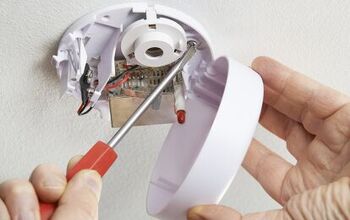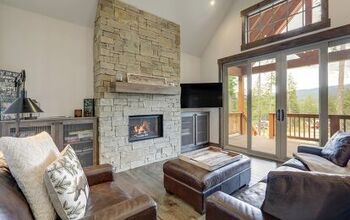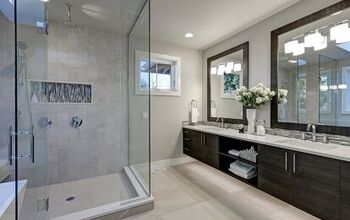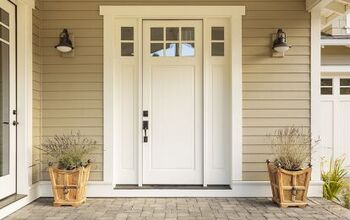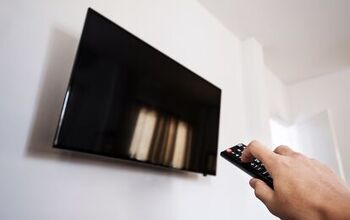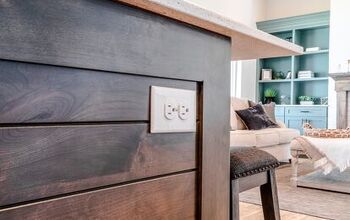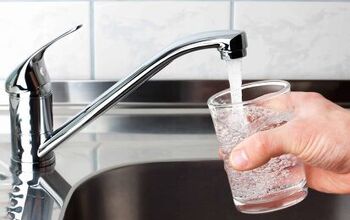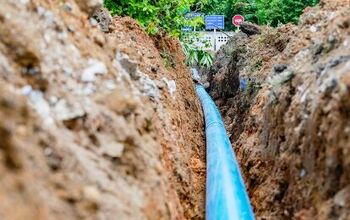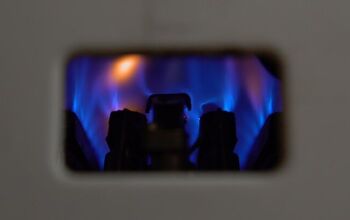Why First-Time Homebuyers Underestimate Home Maintenance Costs

Buying your very first house is a huge accomplishment, and it’s also one of the most expensive purchases you’ll ever make. But closing day isn’t the finish line when it comes to home-ownership costs; it’s only the beginning. Many first-time homebuyers underestimate maintenance costs, which could lead to financial stress and buyer’s remorse.
First-time homebuyers often let emotions overshadow the financial realities of home ownership. They rely on positive inspection reports, outdated home repair estimates, and unrealistic maintenance requirements. New buyers might assume they can handle many repairs themselves, overestimating their DIY skills and time availability. Renters aren’t used to taking care of a property long-term or footing the bill for repairs.
Aging appliances, a leaky roof, regular HVAC service, lawn care, and rising utility costs are just a sample of the expenses that come with owning a house. It’s not uncommon for first-time buyers to underestimate these costs, and understanding why can help future homeowners plan their budget more realistically.
Nine Reasons first-time homeowners underestimate maintenance costs
1. Emotions Overshadow The Financial Realities Of Owning A Home
One of the biggest reasons first-time homebuyers underestimate home ownership costs is emotions. The excitement of buying your first home becomes all-consuming for a lot of eager and proud buyers, clouding financial realities and responsibilities.
New homeowners often focus on the fun stuff, like decorating, furnishing, and personalizing their space. They might splurge on cosmetic upgrades, but overlook the less glamorous (but far more vital) needs, such as HVAC maintenance, replacing an outdated water heater, or converting an old fuse box to breakers.
The emotional high of becoming a homeowner could lead to a bit of optimism bias, with buyers assuming negative things aren’t going to happen to them. Unfortunately, home ownership isn’t a problem-free deal, and it’s not a matter of if things will break, but when.
2. New Homeowners Misinterpret A Positive Home Inspection Report
Getting a home inspection before you sign on the dotted line for your new home is a must for any savvy buyer. Home inspections can point out potential issues, current problems, and offer valuable insights into the kind of house you’re buying.
However, a positive home inspection isn’t a green light to a stress-free, perfect property. Yes, inspections are invaluable, but they’re not crystal balls. Inspectors can only see so much. They don’t look inside walls or know when an appliance is going to fail.
A home might appear to be in great shape, but even so, nothing lasts forever. For example, the average lifespan of a water heater is about eight to 12 years, and HVAC systems could last for 15 to 20 years.
Of course, even these numbers can vary significantly depending on things like maintenance, installation, and the quality of the items. Therefore, when a first-time buyer reads “no major defects noted” on their inspection report, they may misinterpret it to mean they won’t have to spend a lot on maintenance or repairs.
However, the reality is, even a well-maintained home requires maintenance, and major systems eventually need replacing. When those repairs hit, they can easily cost thousands.
3. Owning A Home Comes With Hidden Costs That Are New To Most Renters
Homeownership is often a wake-up call for many first-timers because they’re used to renting. When you rent, if something breaks down, it’s someone else’s problem. Do you need a new air conditioner? That’s your landlord’s responsibility.
Therefore, it’s understandable that new buyers don’t think about things like regular lawn care, pest control, cleaning out gutters, or servicing the HVAC system. Consequently, because renters typically don’t need to handle these things, they don’t own things like lawnmowers, ladders, and other essential tools.
4. Social Media And HGTV Highlight The Dream Of Home Ownership
Look on social media and you’ll see people beaming about their new, beautiful house or showing off the latest furniture or decor they bought. HGTV and similar channels showcase giddy homebuyers purchasing their dream homes.
Even fixer-upper shows often show the more glamorous side of renovations. Although, admittedly, you also get some big setbacks, too, like termite damage or mold.
However, the dreamier side of home ownership is what takes center stage most of the time, and first-time homebuyers zero in on this. Therefore, they may view their home as an investment that once they buy it, is set. The reality is, a home requires constant care if you want to protect your investment.
5. First-time Homebuyers Focus On The Initial Purchase
Buying a home is a huge expense, so it’s natural to focus on the initial purchase. Buyers consider the list price, and maybe even the additional costs of buying a home (like insurance, property taxes, title insurance, etc.).
First-time homebuyers spend months fixated on saving for a down payment, closing costs, and moving expenses. It’s certainly a major source of financial stress when you’re preparing for closing day, so it’s hard to see past that point.
Unfortunately, many buyers stretch their budgets to the limits to meet these initial purchase benchmarks, leaving little in reserve for what comes next. The result is entering home ownership with little saved for maintenance, unexpected repairs, or emergency savings.
Financial experts usually recommend setting aside 1% to 4% of your home’s value annually for maintenance. For example, if you buy a home worth $400,000, you’ll need between $4,000 and $16,000 each year to cover repairs and care.
However, most new buyers don’t think about home maintenance costs when they determine a home’s affordability. They simply see if they can afford the monthly mortgage payment, and that’s it.
6. Buyers Don’t Consider Deferred Maintenance From Previous Owners
There’s another reason new homeowners might underestimate what it costs to take care of their home. They don’t think about the problems left behind by previous owners. Deferred maintenance isn’t any fun to deal with, but that doesn’t mean you can ignore it.
Sellers often focus on the cosmetic features to make the home as appealing as possible, glossing over the invisible, more expensive issues. First-time buyers could end up dealing with delayed repairs on plumbing, electrical systems, insulation, or roof problems.
Even with a home inspection, buyers won’t always see these deferred issues, especially if they’re hidden in walls or under floors. Inherited problems start popping up after closing day, usually taking new owners by surprise.
7. New Homeowners Overestimate Their DIY Skills
Nowadays, you can find a YouTube or TikTok tutorial on how to fix pretty much everything. That’s great, but it’s also bad.
Access to so much information often gives some people a false sense of security when it comes to tackling home repairs. They figure if something breaks, they can simply pull up a video and fix it themselves.
However, even with the knowledge in front of you, it doesn’t mean you have the skills or the right tools to pull off a task. If you’re not realistic about your abilities, you could even cause more damage, leading to more expense.
What started as a simple fix for a pro, like handling a clogged sink, could end up turning into a massive project. Improper repairs or poor installations are also hazardous, leading to bigger problems later.
On the other side of the coin, there are skilled people, but they don’t consider the time factor. They assume they’ll be able to handle everything themselves, then life happens. Busy schedules result in needing to hire professionals to take on some of the load, which leads to higher costs.
8. Maintenance Expenses Increase With Inflation And Supply Chain Issues
Over the years, materials and labor costs tend to rise, sometimes significantly. Lumber, roofing materials, equipment parts, appliances, and other supplies go up in price thanks to inflation. Also, in areas where skilled tradespeople are in short supply, labor costs can be staggering.
First-time buyers who rely on outdated online estimates or anecdotes from their parents and other older homeowners are in for a shock. For example, your parents might tell you that they replaced their water heater for about $700, but that was 8 years ago. If you’re expecting that same number, you’ll be really surprised when you get the bill for $1,500.
Even routine maintenance goes up each year. An HVAC service that cost $50 or $60 ten years ago costs over $100 or more today. These are examples of how things change, but new buyers often don’t look at the most recent data.
9. Owning A Home Requires A Long-Term View
Renters usually move around more often, meaning they rarely stay in one place for more than several years, if that. Therefore, they may never even experience living in a home with a faulty AC or leaky roof. Consequently, they don’t have experience with these larger issues that pop up over time.
When they end up buying a home, suddenly they’ve entered into a long-term relationship. Most first-time buyers don’t even think about how small, seemingly insignificant issues can grow into big problems if not handled quickly.
For example, if you don’t clean out the gutters, you could end up with roof leaks or foundation damage. If you skip routine HVAC maintenance to save a few bucks, you could shorten your unit’s lifespan. You end up having to replace the whole system sooner than necessary or paying for costlier repairs.
Ignoring an annoying dripping sound could mean you’re dealing with mold and structural damage later. New homeowners might overlook or ignore small issues to put money elsewhere, like new furniture. Unfortunately, this decision often results in big blows to the budget later on.
Tips For First-Time Buyers To Prepare A Better Budget
The good news is that all first-time homebuyers aren’t destined to live a life full of financial disaster. You just need to be proactive and understand the realities of home ownership to make things go more smoothly.
Here are a few ways new homebuyers can ensure their long-term picture is more financially sustainable.
- Budget for home maintenance by setting aside 1% to 4% of your home’s value each year. Divide the number by 12 if you plan to save monthly. Choose the percentage based on the age and condition of your home.
- Create a home maintenance schedule and keep track using a calendar so you don’t miss any essential services. Note things like HVAC filter changes, flushing the water heater, cleaning the gutters, routine pest control, etc.
- Get multiple quotes for repairs so you don’t overpay for services and can get updated pricing.
- Sharpen your DIY skills by watching tutorials and attending community classes. However, always remain realistic about your skill level.
Buying Your First House? Consider The Big Financial Picture
For first-time buyers, the excitement of having their very own home often overshadows the practical reality of home ownership. Unrealistic budgeting, skewed expectations, and an overly optimistic outlook can lead to financial pitfalls that turn a dream home into a nightmare.
Buyers who keep things real, look at the big, long-term picture, and educate themselves with current data put themselves in a better place. When you plan for the maintenance costs associated with home ownership, you can handle them better.
However, you need to be honest and realistic with what those costs are. Don’t let emotions, social media, and outdated estimates cloud your judgment.
Related Guides:
- How Much Should You Spend Per Year On Home Maintenance?
- Six Things To Consider Before Buying Your First Home
- Tips For First-Time Homebuyers: What to Expect In The Process

Stacy Randall is a wife, mother, and freelance writer from NOLA that has always had a love for DIY projects, home organization, and making spaces beautiful. Together with her husband, she has been spending the last several years lovingly renovating her grandparent's former home, making it their own and learning a lot about life along the way.
More by Stacy Randall











![The 5 Best Angle Grinders – [2022 Reviews & Buyer's Guide]](https://cdn-fastly.upgradedhome.com/media/2023/07/31/9071326/the-5-best-angle-grinders-2022-reviews-buyer-s-guide.jpg?size=350x220)
